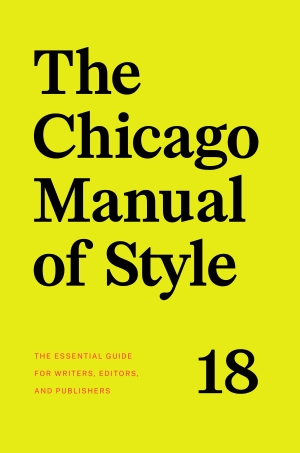Please note: The Chicago Manual of Style released the 18th Edition in September. The OWL is currently updating its pages to reflect changes in the new edition.
 18th Edition Chicago-style citations utilize two distinct formats: the notes and bibliography format and the author-date format. Both formats usually include a separate bibliography page where all references are listed. Students should double-check with their instructors about which format is preferred.
18th Edition Chicago-style citations utilize two distinct formats: the notes and bibliography format and the author-date format. Both formats usually include a separate bibliography page where all references are listed. Students should double-check with their instructors about which format is preferred.
The notes and bibliography format is typically used in humanities classes like literature, art, and history. Sources are cited in the text with a raised numeral like this.1 Each numeral corresponds to a footnote at the bottom of the page or an endnote at the end of the essay.
The author-date format does not use raised numerals, footnotes, or endnotes. Instead, the source author and the date of their publication are referenced directly in the text within parentheses as seen here (OWL 2023). The parenthetical reference should appear before the period in the appropriate sentence, except in cases of block quotations (five lines or longer) when the parenthetical reference comes after the quote’s terminal punctuation. Often, page numbers should be included as well and would be listed after a comma following the year of publication. For instance, if we were citing the last lines of F. Scott Fitzgerald’s The Great Gatsby, where he talks about boats pressing on “against the current, borne ceaselessly into the past,” that citation would appear like so: (Fitzgerald 1925, 180). These citations correspond with the bibliography included on a separate page at the end of an essay.
Our usage of Fitzgerald aside, the author-date format is mostly utilized in the sciences.
